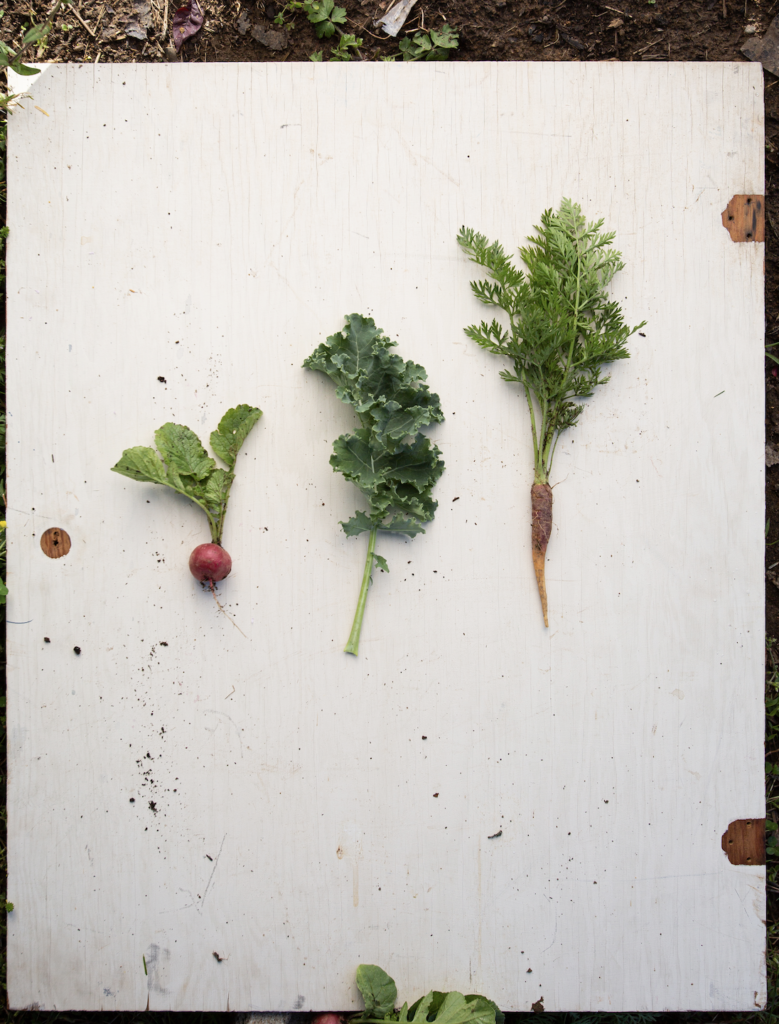The way we farm matters.
By Emily Scifers
As dawn starts to creep over the horizon, I pull my aching body out of bed. Yesterday’s planting took a toll. I tell myself not to skip my morning walk around the field. It loosens me up before I really get to work. Spring training on the farm is real. It takes a couple weeks for my body to adjust to the movements of planting, loading wheelbarrows of compost and hoeing, until I can hop out of bed and not feel the previous day in my joints.
Today is going to be busy. I will be racing the rain, which is motivating and stressful at the same time. The goal is to get as much planted before the rain comes. It will all be worth it. There is nothing more satisfying than planting right before a rain comes. The plants love it!
I go out to the field to pick greens for my morning smoothie. Kale and spinach are the only survivors from the previous season’s planting. They are my favorites and always amaze me. I admire their ability to survive all winter after dealing with the onslaught of pests in the late summer and fall. Their flavor in the winter and early spring is so different than in the heat of the summer. After a couple frosts, they are sweet.
After breakfast, I head back out to the field to start planting. Rather than tilling the beds, we cover them with giant billboard tarps like the ones you see from the highway. In the spring when I take the tarps off, mice start to scurry. They do a lot of work during the winter months, tilling and burrowing through the soil.
The real champs, however, are the earthworms. They spend the winter chowing down on all the previous year’s debris of stalks and roots, leaving behind a nice, tilthy soil filled with their castings. The worms are my livestock. I feed them cardboard and newspaper, layering it in the walking paths or on beds I won’t need for a few weeks. They go wild breaking it down and leave behind a farmer’s dream soil. My goal is to not have to work the soil with a hoe. I want to be able to unearth the bed, lay compost, rake it and plant. Today I am lucky — two beds that I will be planting are just right.
The race is on. I plant kale, cabbage, spinach and lettuce mix. I find myself thinking about the people who love to eat these vegetables and come to the market looking for them. Growing food is hard work, but I picture these people in my mind and recall conversations we have had at the farmer’s market about the flavor of our food. It makes it all worth it. When I am having a hard day in the field or I am burned out, I remind myself of this and why I continue to do it. Food has the power to build community and bring people together. I love being a part of that.
Now, it’s after lunch, and I have just one more bed to plant. I am tired, but I tell myself I can take it easier tomorrow since rain is coming. As I look out over the field, it is mostly brown with a little bit of green. In six weeks, the field will be lush, covered with many hues of greens with a pop of red here and there. Then harvest begins, the reward for planting.
I am laying in bed listening to the rain and reflecting on what the season may bring. There will be many more races, but ultimately, Mother Nature wins. Throughout the years, she has taught me to be humble and often reminds me that I am not in control. No matter what she throws at me, I just need to tough it out and roll with the punches. I drift easily into a hard sleep, ready to wake up and do it all over again.
Build your own organic raised-bed garden: Tips from Emily
1. In a sunny location where you want your garden bed to be, put down a couple of layers of cardboard.
2. On top of the cardboard, lay a four-sided box built out of cedar or untreated lumber. Make sure the cardboard extends beyond the base of the box so weeds don’t grow around the outside of the box.
3. After the box is secured, fill it with a mixture of garden soil and compost. Rake it out flat for planting.
4. Plant with your favorite vegetable crops.
5. After your crop is done producing, cut it back just below the soil surface. (Earthworms love to eat decomposing plant roots.) Add a thin layer of compost before replanting.
6. When your bed is finished for the season, cover it with cardboard and mulch.
7. The following spring, uncover the bed, add a layer of compost, and plant.


